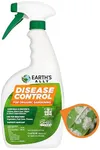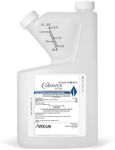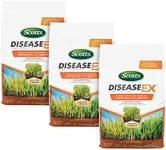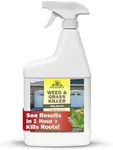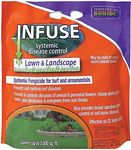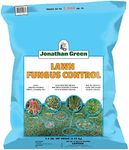Buying Guide for the Best Fungus Treatment For Lawns
Choosing the right fungus treatment for your lawn is crucial to maintaining a healthy and vibrant yard. Fungal diseases can quickly spread and cause significant damage if not treated properly. To select the best treatment, you need to understand the key specifications and how they relate to your specific lawn needs. Here are the main factors to consider when picking a fungus treatment for your lawn.Type of FungusIdentifying the type of fungus affecting your lawn is the first step in choosing the right treatment. Different fungi require different treatments, so it's important to know whether you're dealing with common types like dollar spot, brown patch, or powdery mildew. You can often identify the fungus by the symptoms it causes, such as discolored patches, moldy growth, or wilting grass. If you're unsure, consider consulting a lawn care professional for an accurate diagnosis.
Active IngredientsThe active ingredients in a fungus treatment determine its effectiveness against specific types of fungi. Common active ingredients include azoxystrobin, propiconazole, and chlorothalonil. Each ingredient targets different fungi and has varying levels of toxicity and environmental impact. When choosing a treatment, look for one with active ingredients that are proven to be effective against the fungus in your lawn. Additionally, consider the safety of the ingredients for pets and children if they frequently use the lawn.
Application MethodFungus treatments come in various forms, including granular, liquid, and spray. Granular treatments are easy to apply with a spreader and are ideal for large areas. Liquid treatments can be mixed with water and applied with a sprayer, offering more precise control. Spray treatments are convenient for spot treatments and smaller areas. Choose the application method that best suits the size of your lawn and the severity of the fungal infection. For extensive or severe infections, a combination of methods may be necessary.
Coverage AreaThe coverage area of a fungus treatment indicates how much lawn space the product can effectively treat. This is usually measured in square feet or square meters. To determine the right coverage for your lawn, measure the affected area and compare it to the product's coverage specifications. It's important to choose a treatment that can cover the entire infected area to ensure complete eradication of the fungus. If you have a large lawn, you may need to purchase multiple packages or a product with a larger coverage area.
Frequency of ApplicationThe frequency of application refers to how often you need to apply the treatment to achieve the desired results. Some treatments require multiple applications over a period of weeks or months, while others may offer long-lasting protection with a single application. Consider your schedule and willingness to reapply the treatment when choosing a product. If you prefer a low-maintenance option, look for treatments with longer intervals between applications. However, for severe infections, more frequent applications may be necessary to fully eliminate the fungus.
Environmental ImpactThe environmental impact of a fungus treatment is an important consideration, especially if you are concerned about the health of your soil, plants, and local wildlife. Some treatments contain chemicals that can be harmful to beneficial insects, aquatic life, and the overall ecosystem. Look for eco-friendly or organic treatments that are designed to minimize environmental harm. These products often use natural ingredients and are biodegradable, making them a safer choice for your lawn and the environment.




